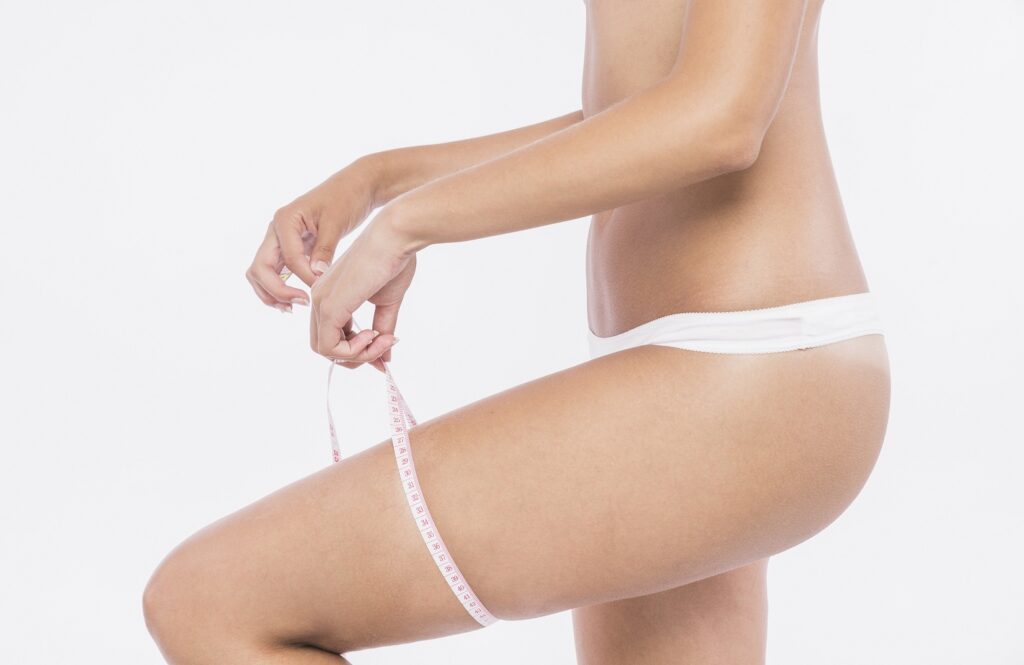A lipoimplant or autologous fat transfer (from the same patient) is a procedure that consists in the aspiration of fatty tissue from some part of the body (abdomen, hips, etc.) and repositioning or grafting in another place to give volume to certain areas like glutes, calves, thighs. The fat, being an autologous graft, is very safe and when well applied, it can have a very long stay in the placed area.
Benefits:
- Can be use in multiple body areas
- Immediately result of body contour.
- There is no possibility of rejection as it is autologous.
- Unnoticeable scars.
- Cheaper than silicone implants.
Indications:
- Increased volume and gluteal projection.
- To avoid using silicone implants.
- Small buttocks.
- Post liposuction depressions.
- Aesthetic improvement of the face.
- Rejuvenation of the hands.
- Breast augmentation.
- Use in the genital area.


The ideal area to obtain the fat:
- Inner thighs Lower abdomen In these areas, the fat cells are different and survive better after being transplanted.
- Other areas: flanks, upper and lower back, infragluteal area.
Graft Types:
- Micrograft is placed in small amounts in superficial areas, in this case, we prepare the fat so that it is as thin as possible, they are used on the face, hands, calves, scars.
- Macrografts are placed in deep areas and larger quantities, so their structure does not need to be so fine they are used in body contouring, buttocks, or mammary gland.
Procedure:
- Begins with careful design of the region where the fat will be placed, marking with the patient in standing position (buttocks, calves, depressions, mammary gland).
- Preparation of the fat donor area and placement of local anesthesia.
- Obtaining the graft, generally, with a syringe and cannulas as it is an atraumatic method for adipose cells and they are better preserved.
- Preparation of fat in various ways such as decanting it (resting it), washing it to remove residues that harm the process and give the adipose tissue the highest possible purity to facilitate its integration, as well as the incorporation of growth factors into the graft.
- For fat infiltration The technique is different for macro or micrografts.
- For micrografts, we use larger syringes and blunt cannulas.
- For the micrografts, we use tiny syringes and blunt microcannulas as well. It will be placed in superficial or deep areas as long as there is a good area that can nourish our graft. The technique is with multiple tunnels, in small quantities, and at multiple levels, thus guaranteeing better nutrition of the fat and greater survival, obtaining revascularization of the grafts from the seventh day thanks to the growth factors.
- The volume of fat grafted depends on the area and if it is facial or body but it is always 10% more because there may be a decrease since it absorbs and deflates -Molding of the infiltrated fat through a gentle massage of the grafted area to facilitate its distribution and accommodation homogeneously.
- Bandages of the treated areas.
Post Operative Care:
- Receive the indicated antibiotics and analgesics medication.
- Do not massage or touch the grafted areas until medical control In the infiltrated area avoid the use of any type of equipment such as ultrasound and subdermal therapy, in order not to traumatize the infiltrated fat cells so as not to affect their survival.
- Postoperative lymphatic drainage.
Additional Recommendations:
Remember that a percentage of fat is always placed, as there may be a loss of up to 30% of the graft. It is not advisable to graft too large amounts of fat to avoid complications such as fat necrosis. Therefore, sometimes a second procedure is necessary to maintain the final result.